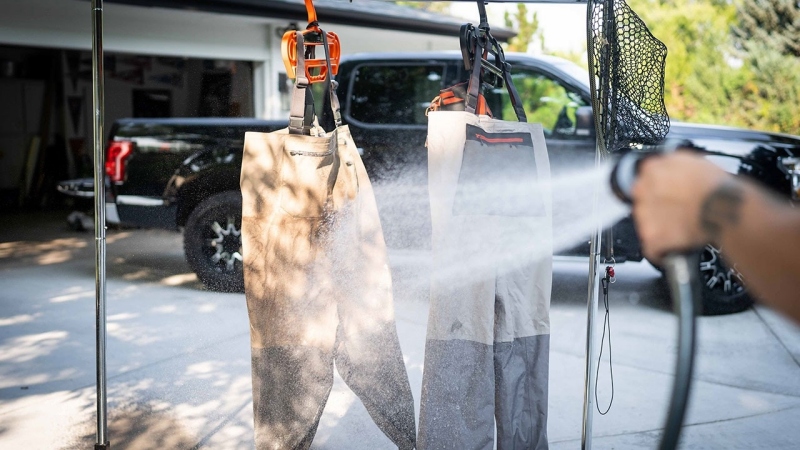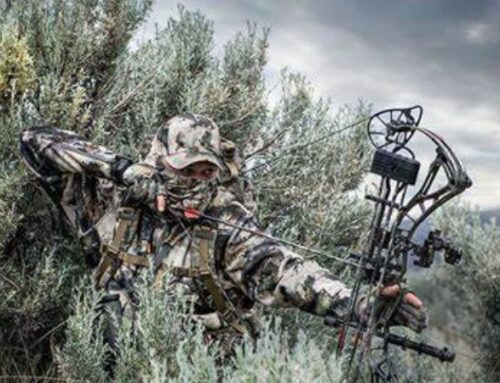As a professional fishing apparel manufacturer with 17 years of experience, BOWINS Garment understands the importance of fishing apparel in your fishing activities. Your fishing trip will be a different experience because of your choice of clothing. To ensure that your fishing apparel always maintains its quality and performance, we will share with you some practical ways to teach you how to properly clean and store them. In this post, you will find a detailed guide and practical advice on how to clean and store your fishing apparel.
1. The correct steps to clean fishing clothes
1.1 Determine cleaning needs
Before you start cleaning, as an angler, you need to learn how to tell when you need to clean your fishing clothing. Frequency and extent of use are two important indicators. Those who regularly engage in fishing activities may need to wash their garments more frequently because they are more susceptible to dirt, sweat stains, and fish odors. If you fish in wet environments such as lakes or oceans, garments may be more susceptible to water stains, mud, or salt from the sea.
In addition, you need to pay attention to the appearance and odor of your clothing. If your fishing garments exhibit visible stains, grease or odors, it is a clear sign that they need a thorough cleaning. Keeping your fishing apparel clean not only helps keep it looking neat and tidy, but also enhances its performance and comfort. Timely cleaning prevents stains from penetrating the fabric fibers and causing stubborn stains that are difficult to remove. By regularly checking and understanding the cleaning needs of your fishing apparel, you can ensure that they are always in tip-top shape, providing maximum comfort and protection for your fishing experience.
1.2 Preparation before cleaning
Before washing your fishing costume, you should carefully check the wash label on the costume. Wash labels usually provide valuable information on how to properly wash and care for fishing garments. Following the instructions on the label will ensure that you are using the correct cleaning methods and products to avoid damage to your clothing.
Fishing apparel may have special cleaning requirements, and one common special treatment is a waterproof coating. Many fishing garments are treated with a water repellent finish to provide additional protection against water penetration. When you wash these garments, take special care to protect and maintain the waterproof coating. In addition, some fishing garments may have special materials or fabric constructions, such as breathable mesh fabrics or sun-protective fabrics. These special materials and structures require special attention and care. Before cleaning, understand the characteristics of these materials and follow the cleaning instructions to ensure that no damage is caused to their performance and function.

1.3 Cleaning procedure
Follow these steps when cleaning your fishing clothes:
REMOVE DISCREET AND FISHY ODORS: Thoroughly remove debris and odors from clothing before washing.
Hand or machine wash: Choose the appropriate hand or machine wash method according to the garment material and cleaning instructions.
Use the right detergent: Choose the right detergent according to the material of the clothes and the degree of stains.
Pay attention to the details of washing: control the water temperature, wash cycle and rinsing, etc.
1.4 Drying Fishing Clothing
To ensure that the fabrics and special finishes of your fishing garments are not damaged, we strongly recommend air drying them naturally. Natural air drying is a gentle and safe way to avoid the damage that high heat drying can cause to your clothing. Hang your fishing garments in a well-ventilated area, such as an indoor or outdoor shaded hanger, to allow air to circulate and help them dry quickly.
However, if your garment’s label specifically allows for drying with a dryer, you may choose to use a low-temperature, gentle dryer program. Make sure you choose a low-temperature option to avoid overheating or shrinkage of your fabrics, and a gentle program to reduce the risk of chafing and stretching of your garments.
Whether you choose to air dry naturally or use a dryer, make sure you don’t rush to wear or store your fishing garments until they are completely dry. Wet clothing is prone to mold and odors, so make sure they are completely dry to keep them clean and fresh.
2. Scientific storage of fishing clothing
2.1 Preparation after cleaning
Ensure fishing clothing is completely dry before storage to prevent the growth of mold and odors. Check and repair any damaged parts of the garment, such as zippers and buttons. If you notice problems such as snagged zippers, loose buttons, or broken seams, repairing them in a timely manner can prevent the problem from worsening and extend the life of your clothing. Seek professional sewing repair services or fix it yourself if needed to maintain the integrity and functionality of your fishing clothing.

2.2 Storage environment
Choose a sheltered storage space and avoid exposing your clothes to direct sunlight as prolonged exposure may cause fading and discoloration. Ensure good ventilation when storing to prevent moisture and mold growth. Choose a dry place to prevent moisture from entering your clothing and promoting mold growth. Also, use breathable storage bags or clothing boxes to help keep your clothing clean and dust free.
2.3 Storage methods
Depending on the type of clothing and storage space constraints, you can choose the appropriate storage method, including folding or hanging. For thicker jackets, fishing pants, etc., it may be more convenient to store them folded to save space and avoid deformation of the clothing. For shirts, fishing shirts and other more wrinkle-prone clothing, hanging storage can keep them flat and reduce wrinkles.
In addition to choosing appropriate storage methods, appropriate insect repellents can be used in the storage area to avoid damage to clothing by insects. In addition, for clothes stored for long periods of time, it is advisable to regularly check their condition and turn them appropriately. This helps to keep the clothing ventilated and avoid shape distortion caused by prolonged compression.
2.4 Regular inspections
By regularly checking your stored fishing clothing to make sure it stays dry and intact, you can ensure that they are still in tip-top shape for the next time you use them. Proper storage methods can extend the life of your clothing and provide you with reliable gear for your fishing adventures.
Conclusions
With this article, Bowins wants to share with you practical advice on how to properly clean and store your fishing apparel. By following these methods, you can protect the quality and durability of your fishing apparel and extend its lifespan. While enjoying your fishing activities, remember to properly wash and store your fishing apparel. Keep them in the best condition so that you can enjoy comfort and protection in the midst of every fishing trip.
We are responsible for every piece of fishing clothing we produce, focusing on quality in every step before production, and we also care a lot about the care and maintenance after we hand it over to the consumer. We hope that our products can still be a highly utilized piece of clothing in your closet even after you have used them for a number of years, and that the manufacturer, Bowins, can be clearly seen when you inadvertently look at the hangtag. If you would like to know more about cleaning and storing your fishing garments, please feel free to contact the dedicated team at Bowins and we will be happy to help and support you.





